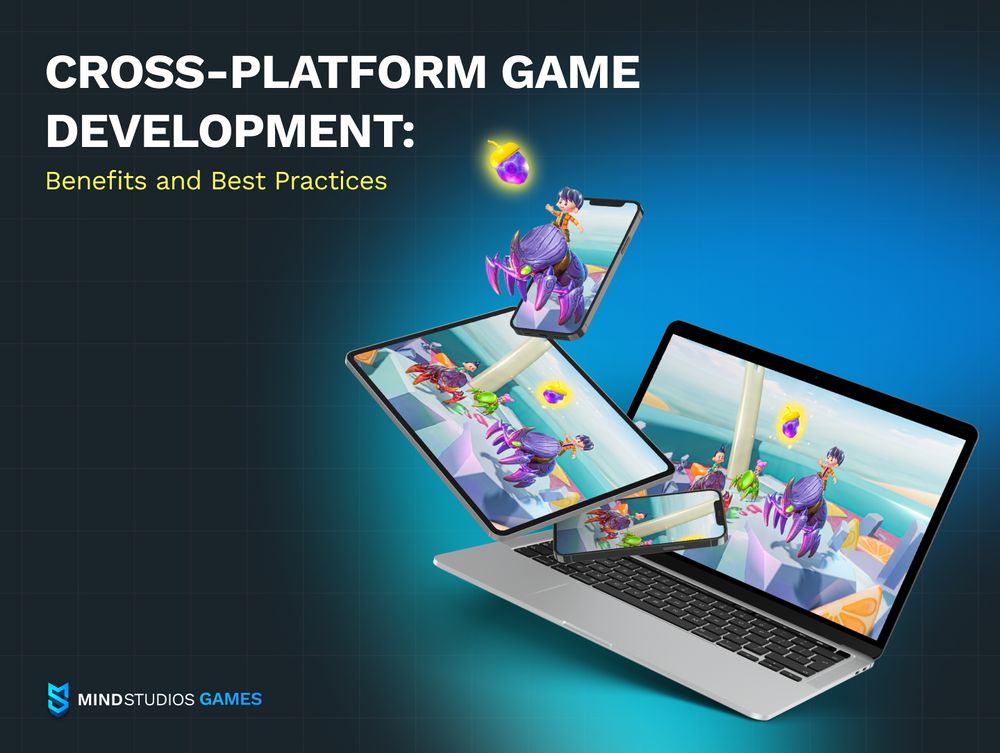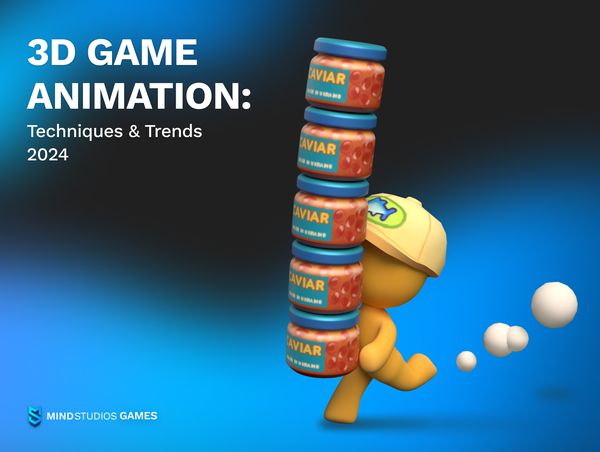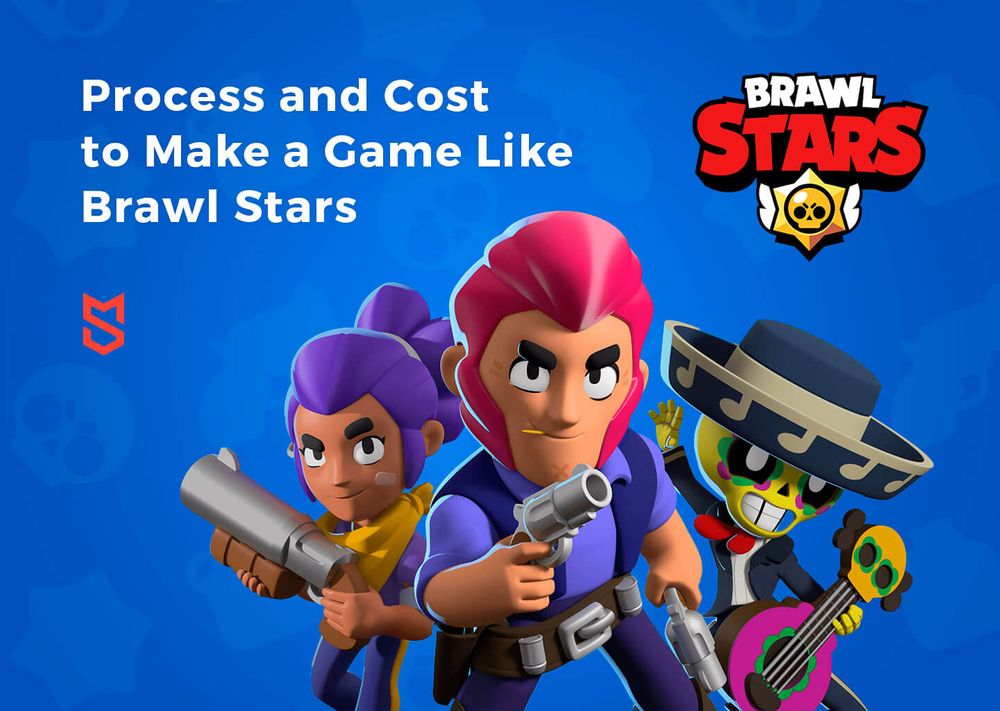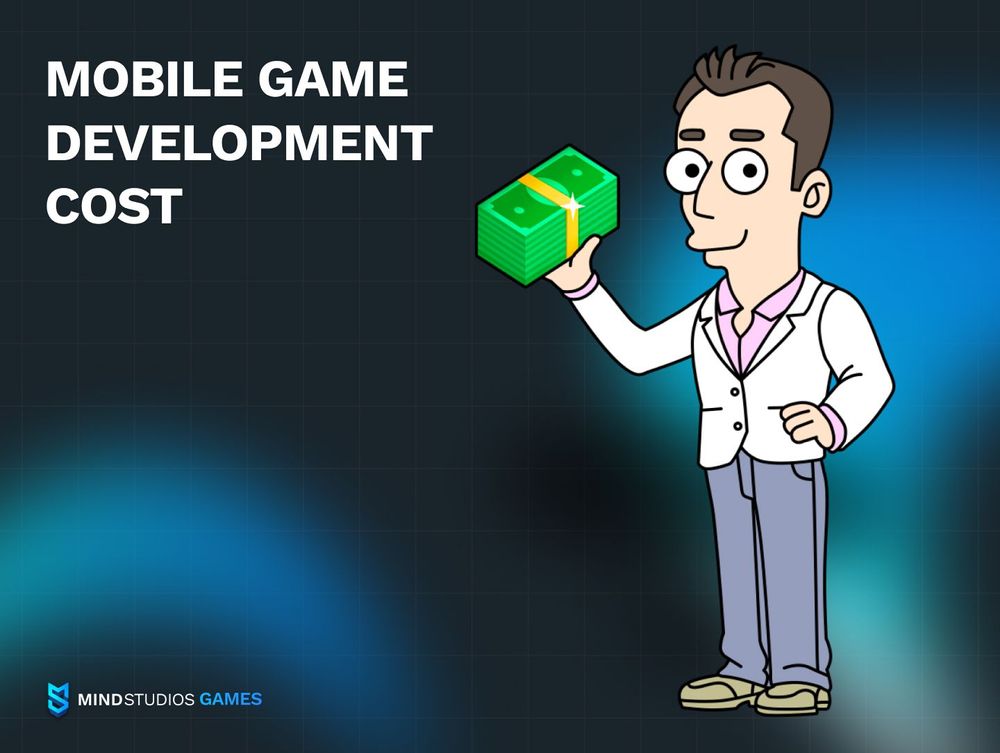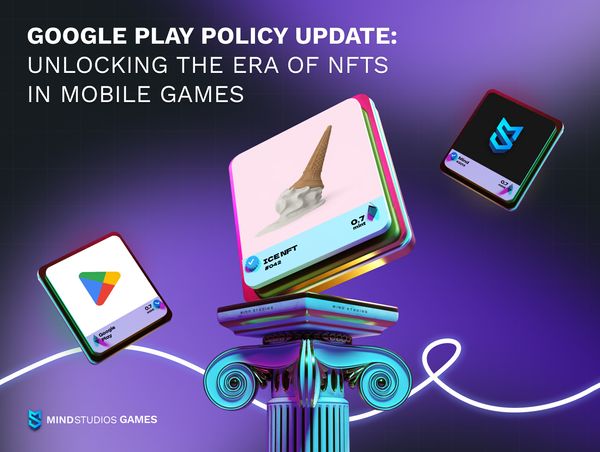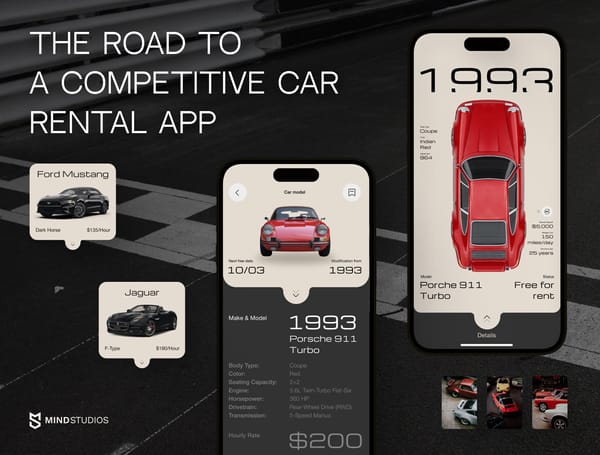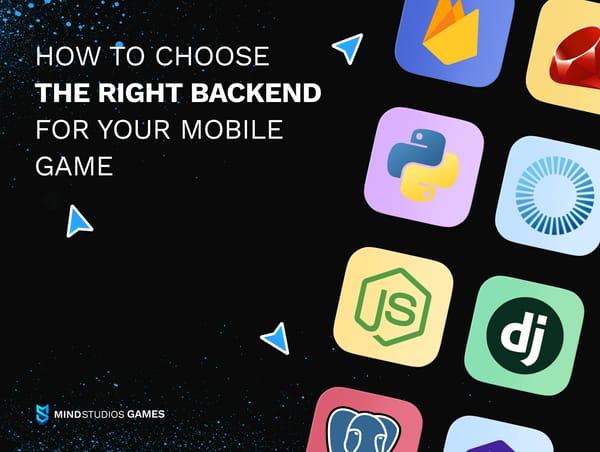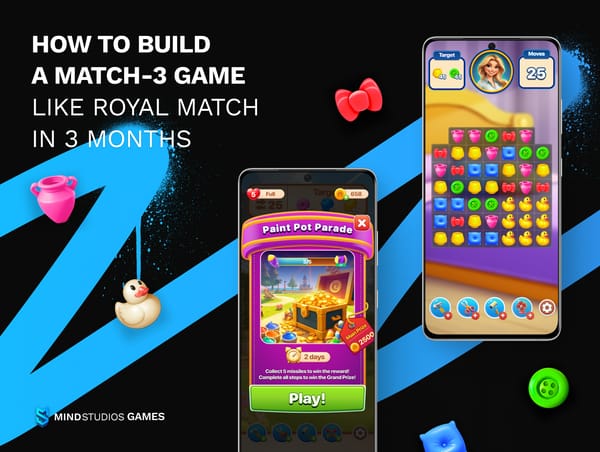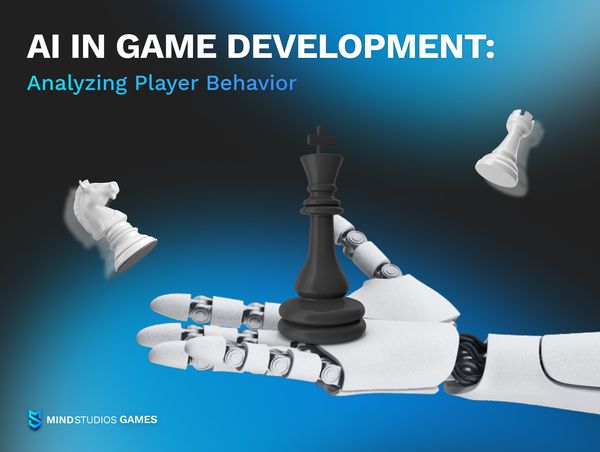In this article, we’ll be talking about mobile game development process. If you’re here reading this, you’re probably thinking about creating a video game of your own and wondering what to expect on the way. Whether you're planning an RPG, an action-packed adventure, or a turn-based game development project, understanding the mobile game development process is crucial.
We at Mind Studios Games believe that the future is with mobile gaming (and ruthless statistics agree with us, by the way, but more on that below). If you’re inclined to agree and are interested in the process for mobile game development, read on.
Why invest in mobile game development?
In 2023, the expected revenue in the mobile segment of the video gaming market is $173.60 billion, out of the $334.00 billion revenue of all video gaming industry. Just think about it — approximately 53% of the whole video gaming industry revenue belongs to the mobile games segment. If that’s not reason enough to invest in mobile game development for your business, then we don’t even know what is…
Just joking, we know more reasons, of course 😀
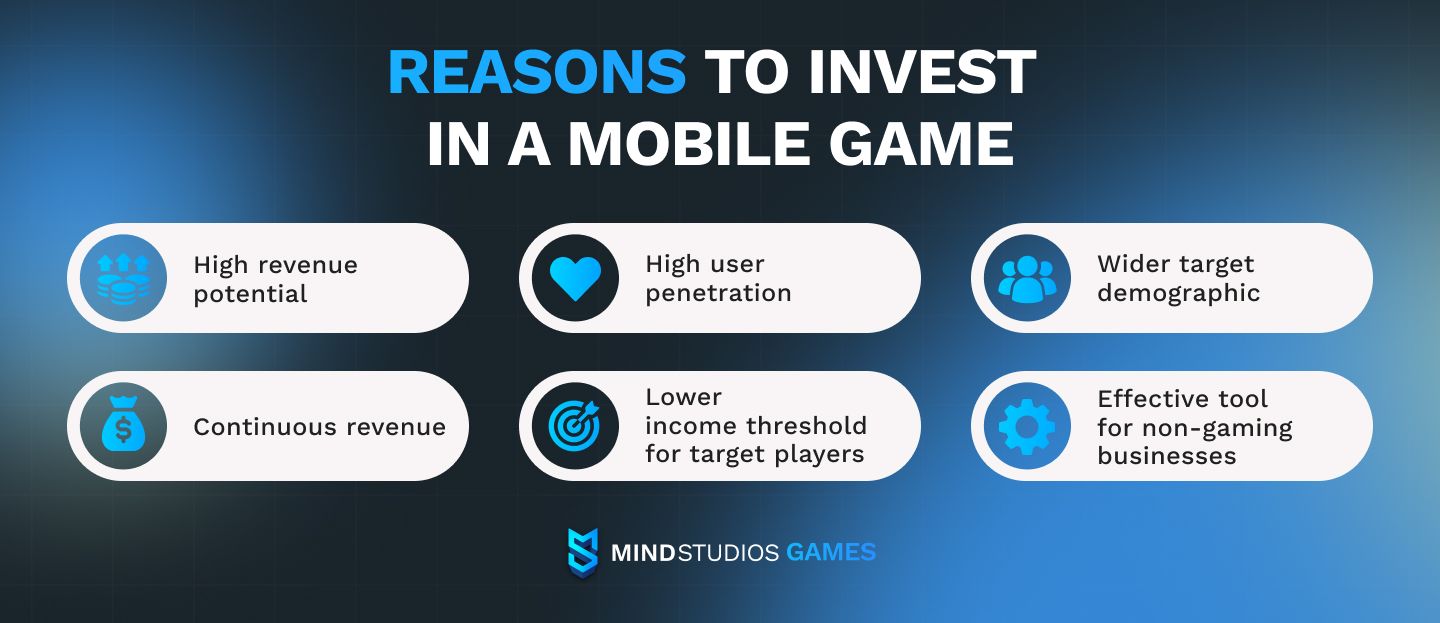
Here’s some food for thought:
- As already stated, mobile games collectively as a market segment earn more than video games for all other segments — PC, console — combined; if you’re planning to create a video game as business and earn from it, it’s sensible to develop a mobile game.
- Mobile games have higher user penetration due to the spread of high-speed mobile internet and the evolution of mobile devices; everyone and their uncle play at least one mobile game at some point these days.
- Mobile games tend to offer easy short-session entertainment, meaning that smartphone users can enjoy games during work/school breaks, commute, and while waiting for appointments; this widens the target demographics for game owners.
- This widening of demographic made working people able to enjoy games more too, bringing into the gamer community numerous people with high-paying jobs like managers and C-level executives.
- Even more important is that to earn with mobile games, it’s not necessary to target well-off hardcore players. The biggest chunk of mobile games are monetized via ads, so no matter how much your players earn, you can get revenue from the game.
- Besides, ads and affordable in-game purchases make for a continuous revenue stream, unlike PC and console games players pay for once.
- Mobile gaming blurred the lines between casual and hardcore gamers — while sessions played in mobile games may be short, the overall time played by mobile gamers is potentially longer (given your game catches the players’ attention).
- Mobile games can be (and often are) used as a side product for a non-gaming business — to offer entertainment amidst boring service, make products easier to understand, market products and services, and earn customer loyalty.
As you can see, reasons for creating a mobile game are numerous. Choose yours.
Step-by-step guide to mobile game development process
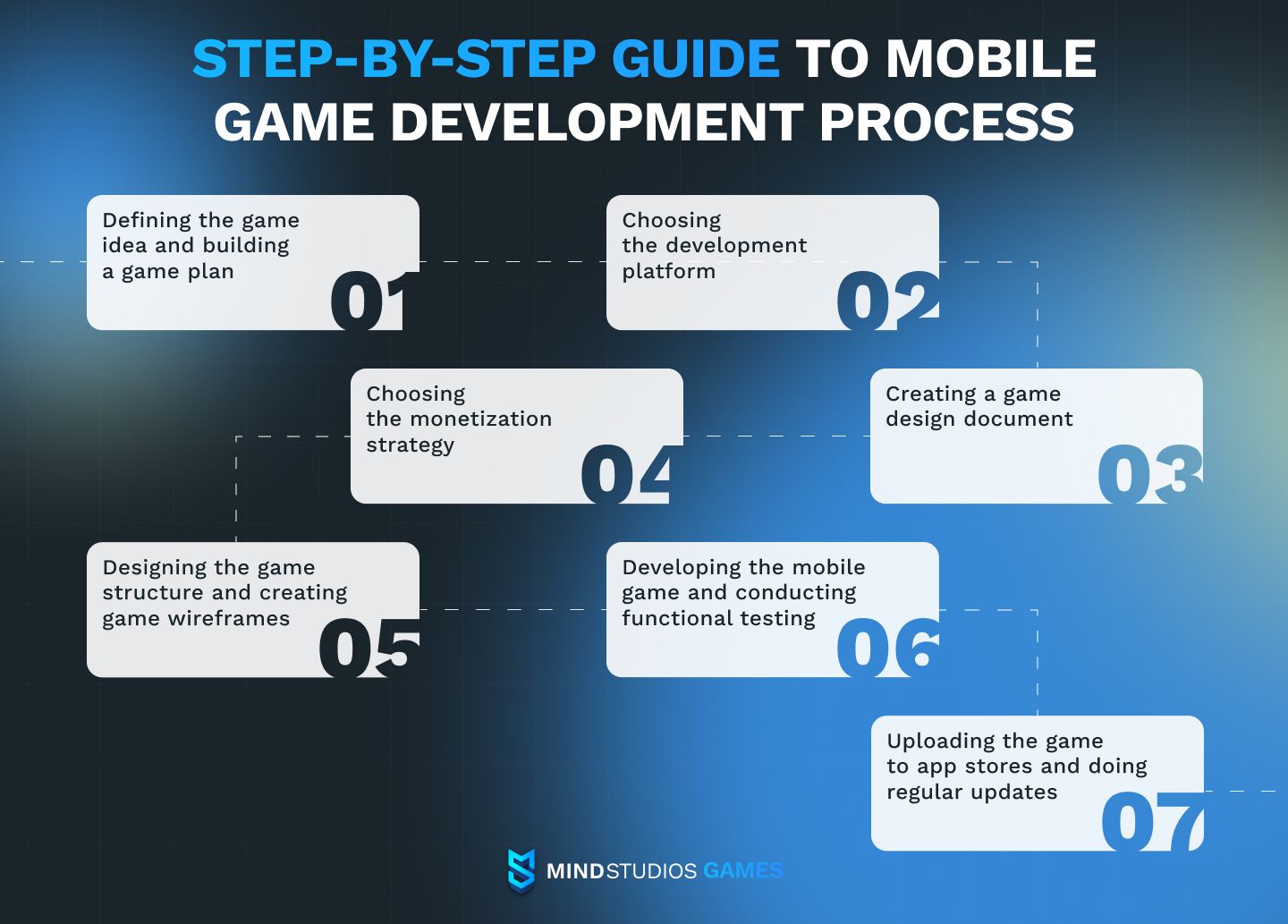
Now that you know the ‘why’s, let’s talk about the ‘how’s. The process to make app game on mobile phones is at the same time similar to and different from the development of non-gaming mobile apps, and it’s also quite different from the process of creating a console or PC game. For starters, it’s usually faster. But let’s go step by step.
Here’s what you need to know about developing a mobile game.
Step 1. Defining the game idea and building a game plan
Game development is a serious endeavor, requiring a lot of involvement on the future game owner’s part. It’s also most often time-consuming and frequently costly, though mobile games are less so compared to console and PC games. Anyway, approaching mobile game development requires a certain level of planning, especially if you plan your game as a potential business.
So, before you begin building a mobile game, do think hard on what you want to create and why you’re creating it. Be it just a mental note, a bullet list, or a color-coded table with all details, it’s essential for success in any big undertaking to define its idea and the reasoning behind it.
Answer these questions:
- What game do you want to build? It’s purpose, type and genre, setting, 2D art or 3D art, etc.
- Who are your target audience?
- Do you plan to monetize your game?
- Overall, what’s your end-game? To deliver the game to as many players as possible, to earn a lot of money, or to make your childhood dream come true? All reasons are valid.
- What’s your budget and timeframe?
- Who are your competitors?
Write up everything you’re thinking of when it comes to your planned mobile game. It will make it easier to proceed with development.
If you’re working with a team of game developers — in-house or outsourcing partners — experienced specialists will help you outline everything necessary.
Step 2. Choosing the development platform
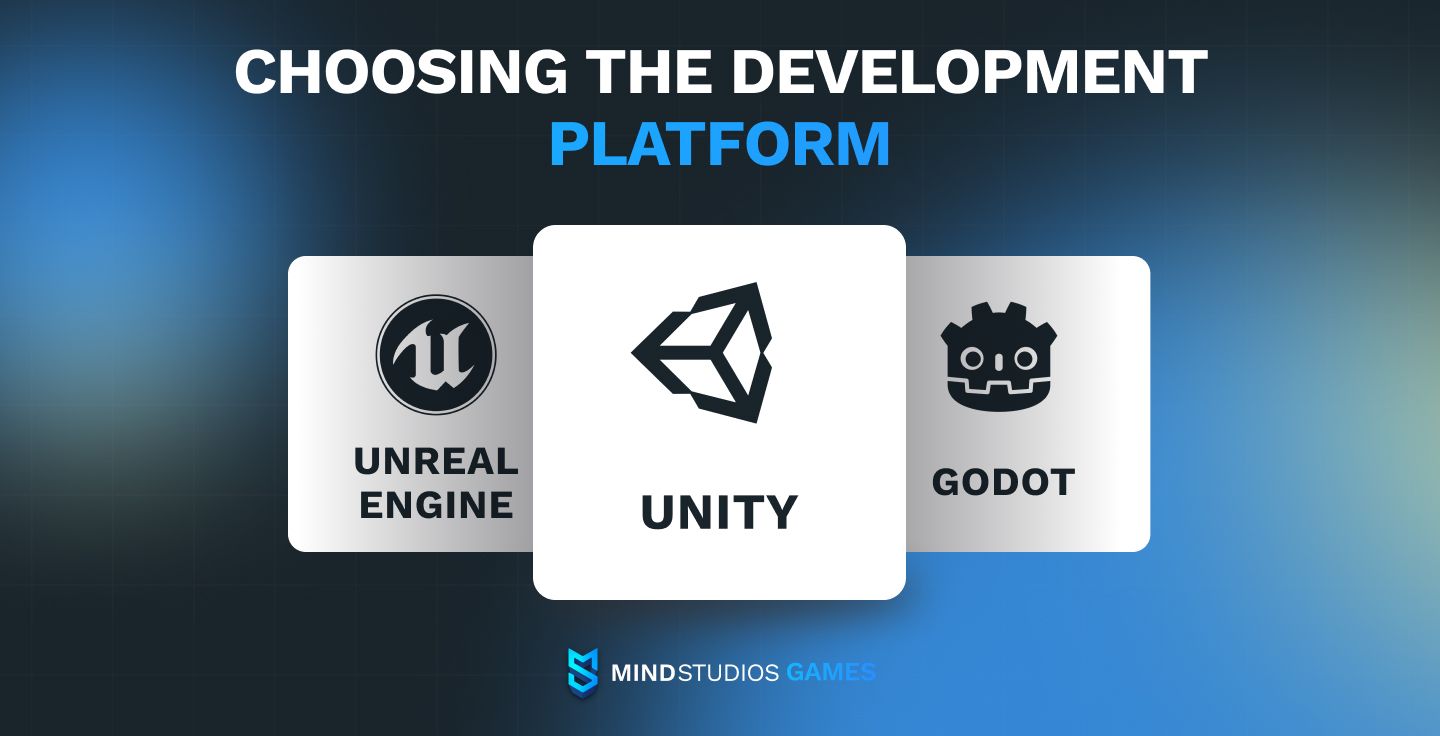
In non-gaming apps, a “platform” is the operating system the app is intended for — Android and iOS on mobile, Windows, macOS, Linux on PCs, etc. Different operating systems use different programming languages and thus require different programmers to build them.
Most video games today are, however, made to be cross-platform, that is, to use the same codebase and be played on multiple operating systems. There are many benefits unique to gaming with this approach.
So in video game development, when we say “platform” we mean the choice of the game engine and frameworks your team will be using for your game.
The selection of game engines is quite vast these days, but the most popular ones are Unity and Unreal Engine (UE), although Godot has been getting more attention due to recent upheavals in the industry.
When it comes to game development for mobile devices, specifically, Unity is the usual choice due to its lighter “weight”, simpler interface, and more liberal pricing compared to UE. Unreal Engine’s biggest selling point is its superb work with highly detailed realistic 3D graphics, which is often unnecessary for mobile games.
Additionally, with about half of all games in the world to date being built with Unity, the market of possible solutions, assets, and specialists is way more diverse than with any other engine.
Your choice of platform for game development will impact, among other things, the features you’ll be able to implement, game mechanics, and the type of art (not all frameworks support 3D art).
Step 3. Creating a game design document
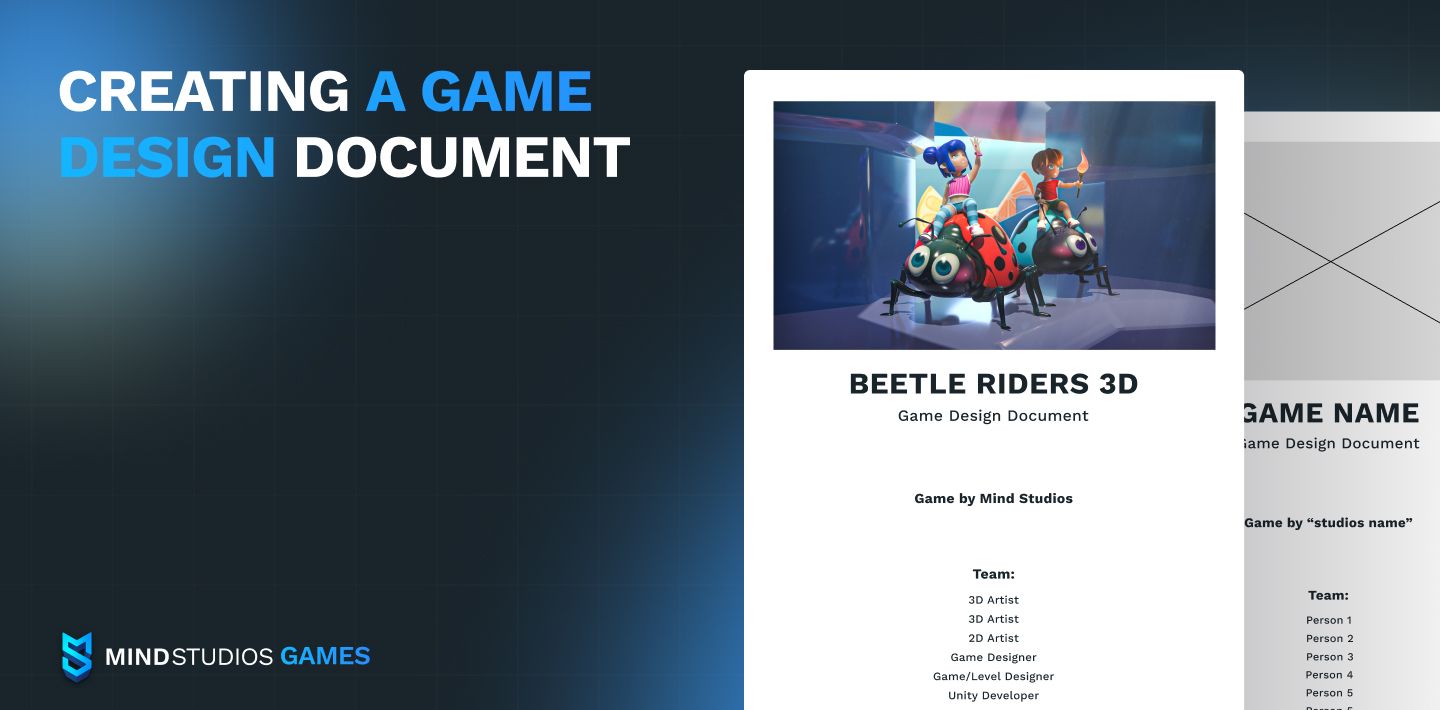
A game design document (GDD) is the documented list of features and requirements for your game. It’s necessary to keep track of what’s been done as well as all changes to the initial game idea.
Chances are, the GDD will undergo changes several times — the more complex the game you’re building, the more changes there will be but even a fairly simple idle clicker might have changes in GDD. There are cases when the game made a 180° turn in core mechanics or even setting midway and even right before release.
A famous story of how Brawl Stars had the longest soft launch ever and changed unrecognizably between its soft and hard launches? Yeah.
That’s why it’s highly important to have a GDD and diligently log every change into it — so that if changes are reversed or new changes are introduced, it was possible to integrate them seamlessly into the game.
For GDD first-timers, a wealth of templates exist on the web to fill in when developing a game. Or you could hire specialists like us at Mind Studios Games, we can create a GDD that will be easy to comprehend for developers of any experience.
Step 4. Choosing the monetization strategy
Monetization is a significant part of functionality that affects mechanics and game design. Hence, if you do plan to monetize your game, it’s vital to choose the strategy of earning revenue early on.
In mobile game development, the most used monetization models are:
- Ads (rewarded ads as well as non-skippable ads that can be removed by buying certain features)
- In-game purchases (for faster grinding, more characters/resources/equipment/other perks as well as packages to get rid of ads temporarily)
- Subscription-like packages (battle passes and the like)
The recent rise of blockchain and NFT games also added to gaming the monetization via in-game transactions, from which game owners can take a fee. Since Google Play is about to allow blockchain games on the platform, this monetization model will probably get a boost among mobile games.
Step 5. Designing the game structure and creating game wireframes
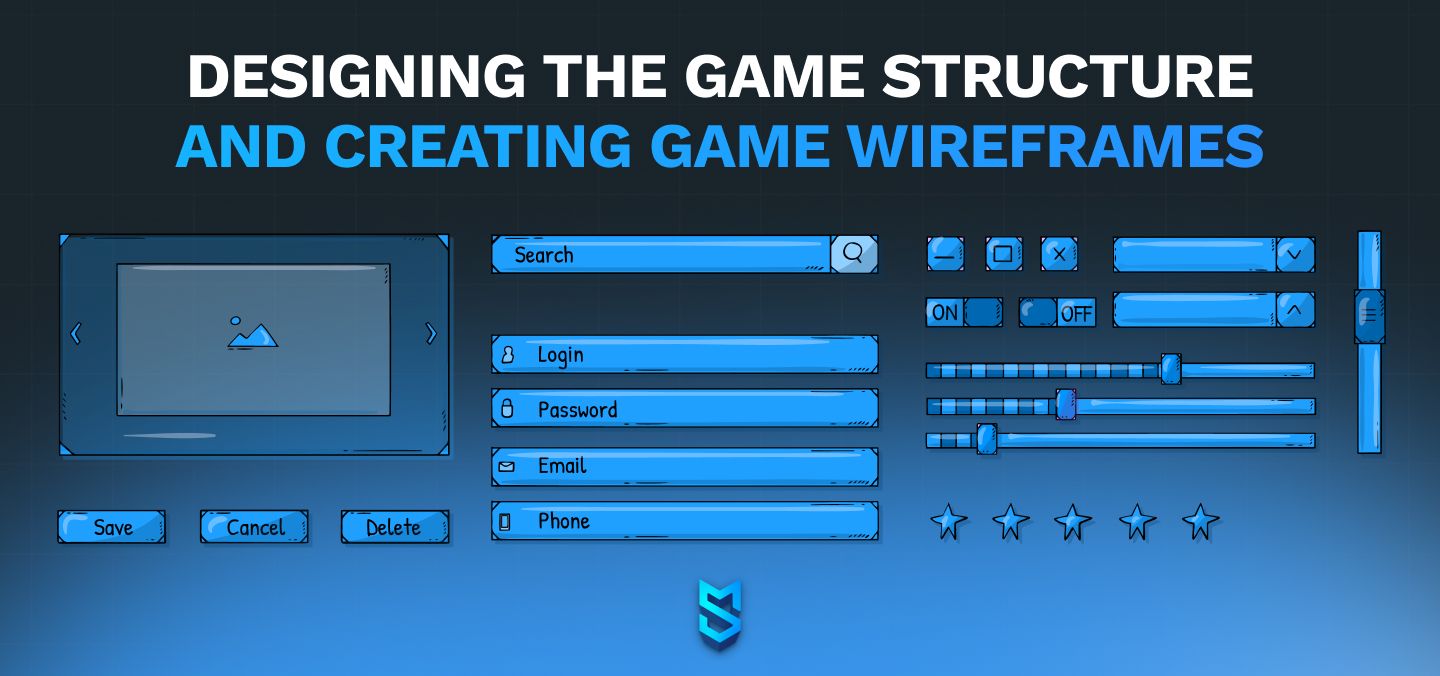
Armed with the GDD, your team will start building the game structure. This is where game designers and artists work together to bring out your vision of the game and put it on paper (metaphorically speaking, since we’re living in a digital era).
Game design includes multiple processes:
- Detailed concept and story
- Level design
- Game mechanics and features
- Characters and resources
- Implementation of monetization
- Main and side quests, events
At this stage, a game designer with the team will create rough wireframes to visualize the whole scope of the game. Usually, wireframes are simple screens with description of actions players can make and what happens in response to these actions.
Based on wireframes, the development team will start the development process of mobile game for you.
Step 6. Developing the mobile game and conducting functional testing
While we’re listing it as a single step, in reality, mobile game development process will go through several stages that comprise “development”. At this stage, expect to see:
- Art prototypes and finalization
- Sound design
- Several demo versions of varying development “completeness”
- Testing
- Bug fixes and structural changes
This is the longest stage. In the mobile game Agile development process that we use at Mind Studios Games, there will be iterations throughout the whole development, with demo versions every “sprint”, at specified intervals. This methodology allows developers and game owners to assess the product multiple times and make changes before the public release.
Functional testing — testing of functionality to identify errors and bugs — is a separate substage conducted simultaneously with development. Due to the high competition of the mobile gaming market, it’s inherently important to allocate ample time to testing before any kind of public release.
Step 7. Uploading the game to app stores and doing regular updates
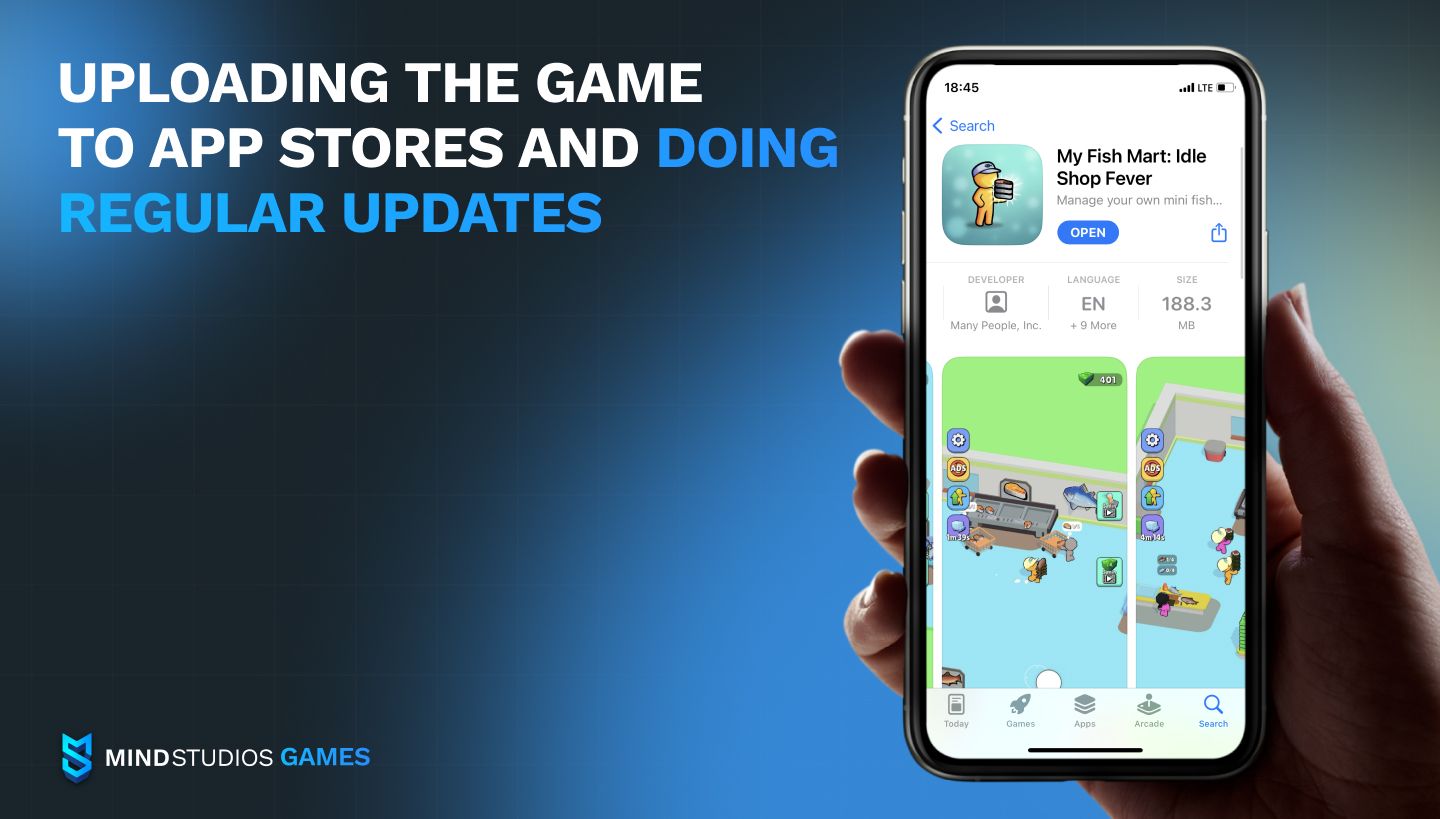
When the game has gone through all the steps above and has been thoroughly tested, it’s time to submit it to mobile app stores. For Android devices, you can also distribute the executable .APK file directly from your website, bypassing the Google Play Store.
Both App Store and Google Play have guidelines to follow for app submission, and those guidelines also cover mobile games. You’ll need a developer account to submit your game for review, and only when it’s approved will you be able to add your game to the store listings.
There are two important points to keep in mind when uploading your game app to app stores:
-
App description. Besides making your game description interesting and screenshots eye-catching, you also need to pay attention to App Store Optimization (ASO), a practice of using keywords to make your game findable in search.
-
Regular updates. Unlike non-gaming apps, where new content and features aren’t always frequent or even necessary, in gaming apps regular updates are a must. Best practices recommend adding content once a month at the rarest, weekly or bi-weekly if possible.
Without regular content or feature updates, your game faces the risk of being discarded fast — the abandonment rate for mobile games is the highest among all types of apps and can reach 90%.
How much does it cost to develop a mobile game?
The inevitable question when you wonder how to make mobile games is how much it will cost. Of course, there’s no single answer to this. However, we can list for you the factors that will influence the final cost.
- Game type and complexity. The more complex mechanics and features your game has, the longer it will take to build and the higher the cost will be.
- Choice of game engine. Unity is free to use up to a certain point, UE also has flexible pricing policies, and Godot is an open-source engine. Which technology you choose will define the necessary investment to some extent.
- Development team. The biggest part of cost is the team. Depending on whether you’re hiring in-house or outsourcing, the location of your team, their experience, the cost can fluctuate greatly.
- Testing. The more complex the game is, the more testing it requires, hence the expenses will grow as well.
- Marketing. While not technically part of “development”, marketing can take a lot of investment, depending on your niche, target audience, and end-goal for your game.
Here’s a rough example of cost calculation for an idle tycoon game, a type of game that’s relatively simple and quick to create:
| Stage | Approximate cost |
|---|---|
| Research, game design concept, wireframes | $1,000–$2,000 |
| Game design | $1,000–$3,000 |
| Game UI/UX design | $1,500–$3,000 |
| 2D / 3D art | $3,000–$5,000 |
| Animations, VFX | $500–$1,000 |
| Level design | $500–$1,000 |
| Sounds, SFX | $500–$1,000 |
| Unity development | $6,000–$12,000 |
| Quality assurance | $2,000–$4,000 |
| Project management | $2,000–$4,000 |
| TOTAL | $18,000–$36,000 |
Overall, a really small mini-game can be as cheap as $3,000 to make with a team from Eastern Europe like Mind Studios Games. But games of middling complexity will cost you $40,000–60,000, and high-complexity mobile games can easily reach $150,000 and more in cost.
Mind Studios Games as your mobile game development partner
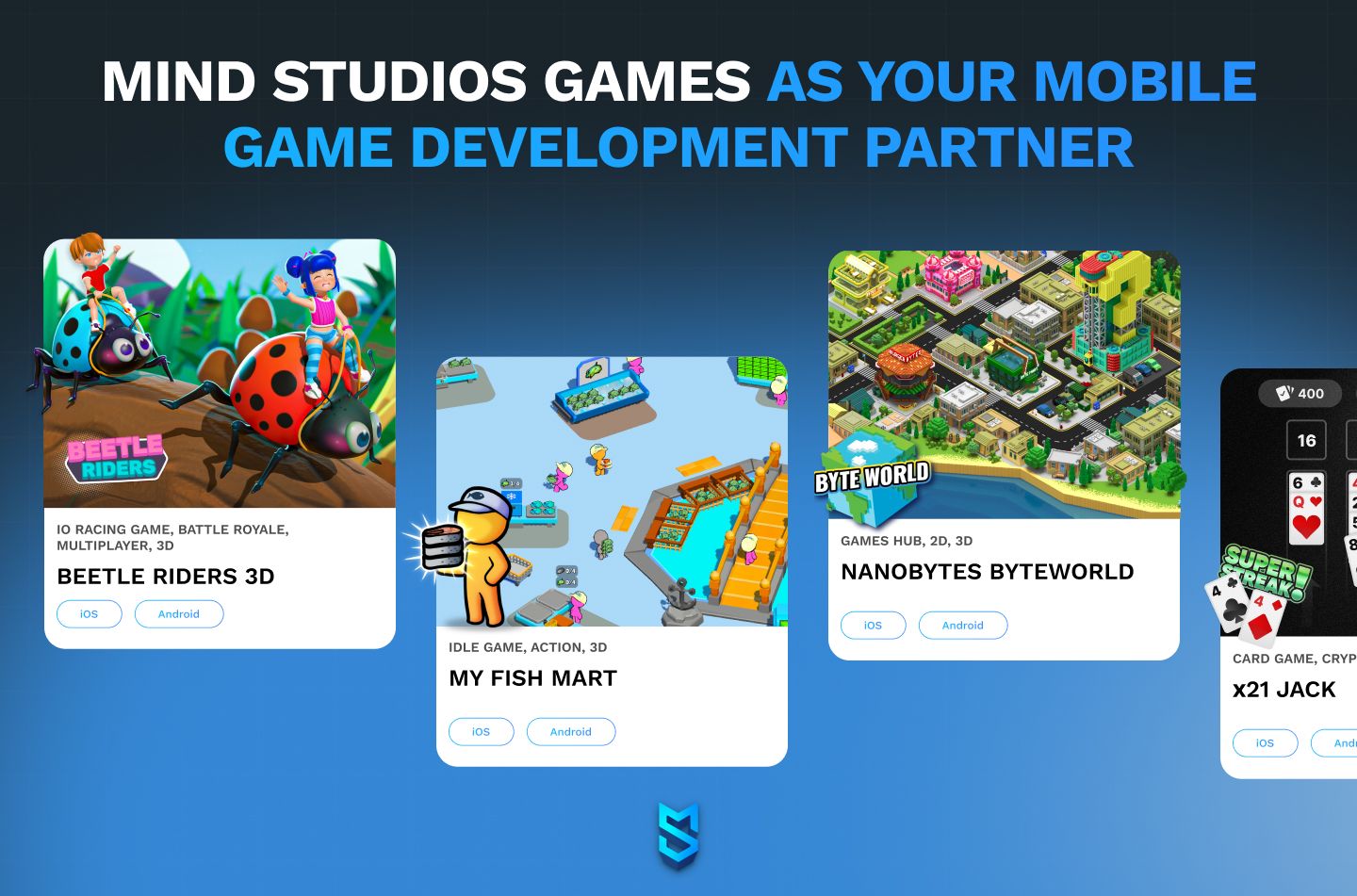
At Mind Studios Games, we create all kinds of games with Unity. We have a diverse portfolio that includes idle games of varying complexities, hyper-casual titles, card games, as well as multiplayer shooters and racing games. We’re also experienced in blockchain-based games and NFT, having partnered with platforms like XMANNA and Japanese Born Ape Society.
If you’re looking for a partner to outsource your mobile game development — full-cycle or partially — check out our website and get in touch for a free consultation.
Conclusion
Mobile games are the future. They’re already getting over half of all video game industry revenue, they have wider reach, and they’re still rapidly growing as an industry, conquering more and more players each year.
Mobile games are faster and cheaper to build than PC and console games, and their monetization strategies are more varied, making it easier to make money. If there’s ever been the perfect time to jump into this cauldron and develop a mobile game, it’s now. The market is big, and there’s a player for every kind of game. Just take that jump. (Don’t close your eyes.)

